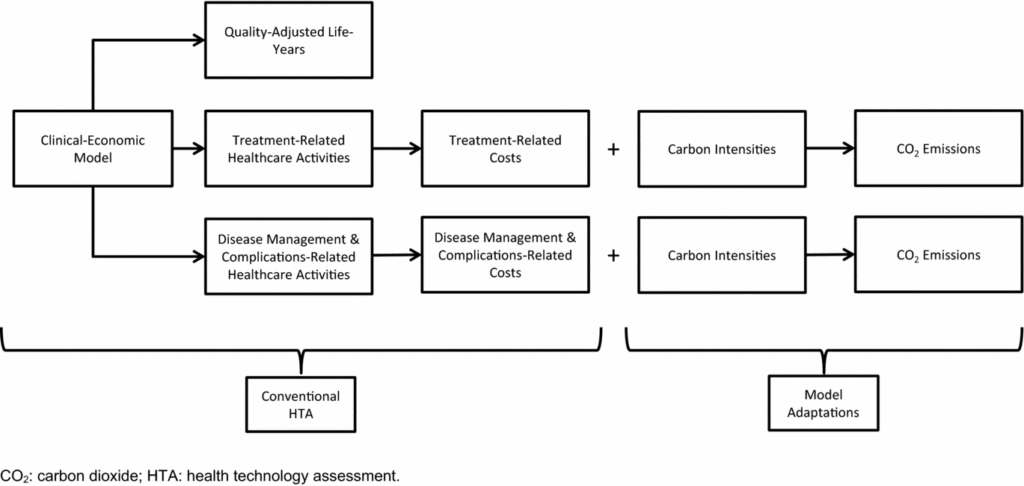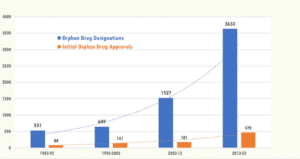Climate Change and HTA

Nobel laureate William Nordhaus claimed that climate change is “the ultimate challenge for economics.” One could say that climate change poses a serious challenge for the health economist as well. Climate change could have negative impact on health across a variety of dimensions including:
Increased pollution has negative impacts on respiratory diseaesThe increased increased intensity of natural disasters (e.g., hurricanes, wildfires) increase deathSome pathogens may spread easier in hotter climatesAccess to clean drinking water may be problematic as fresh water sources dry up. There may be mental health issues due to increased anxiety around climate change
Few may recognize that the health care sector is one of the major causes and beneficiaries of increased air pollution. De Preux and Rizmie (2018) write:
The healthcare sector is one of the largest polluters in the UK, accounting for 25% of total emissions of carbon dioxide of the public sector. Ironically, it is the healthcare sector
itself that is primarily affected by any deterioration in the environment affecting individuals’ health and their demand for healthcare. Therefore, the healthcare sector is a direct beneficiary of its own steps towards sustainability and is more and more viewed as the one who should lead the change.
The paper proposes a simple modification to the standard cost effectiveness approach whereby a technology’s carbon footprint is incorporated into the cost effectiveness analysis. Methodologically, this is done by examining carbon emissions (in tons of carbon dioxide per year) times the carbon price of a ton of carbon dioxide.
Other papers examining how to incorporate climate change into health technology assessment (HTA) were identified in a scoping review by Polisena et al. (2018). One key paper, Marsh et al. (2017), described more formally and graphically how one could readily incorporate carbon emissions into HTA (see figure below).
Marsh et al. (2016) proposes a number of alternatives as well for incorporating climate change into CEA. These include:
Cost benefit analysis. The approach above is an example of cost-benefit analysis. Under CBA, all outcomes are translated into monetary terms. Thus, if one knows carbon emissions and the cost of carbon, one could readily implement environmental factors in a CBA. CBA does has some limitations as one would need credible estimates of the monetary value of carbon; further, CBA is not widely accepted among HTA agencies. Direct health impact. Increase carbon dioxide emissions and pollution can lead to worse health outcomes and then translate these health impacts into a health-related quality of life measure. The authors note that this approach may be problematic to implement. “Much work has been undertaken to catalog empirical studies on the health impacts of environmental outcomes…[but further] work is required to determine the feasibility of using these data to estimate the marginal health gains associated with the marginal environmental improvements of using one technology rather than another.”MCDA. Decisionmakers may value both health gains and improved environmental outcomes. One way to balance these competing objectives would be to conduct a multi-criterion decision analysis (MCDA) framework. MCDA actually includes a variety of specific methods such as: the analytic hierarchy process, the analytic network process, the multi-attribute utility theory, the multi-attribute value theory, outranking, the social multicriteria evaluation, and the technique for order of preference by similarity to ideal solution. Moreover, use of MCDA in formal HTA evaluation is currently limited.
To give a concrete example, mobile health technologies could have a positive or negative impact on the environment. DeGavre et al. (2022) notes that since mobile health (mHealth) can help reduce travel time, emissions would be saved. However, mHealth requires additional electricity use. Further, embedding Information and Communication Technology (ICT) into other materials (e.g., textiles) may “create
difficulties for local waste management processes and often require specific recycling procedures”. Further, mHealth manufacturing processes may be more or less energy intensive compared to alternative treatments.
Certainly this is an area where much more additional research is needed.



